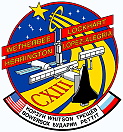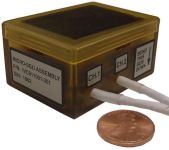
Launched January 16, 2003
Space Shuttle Columbia
The objective of STS-113 (International Space Station (ISS) Assembly Mission 11A) was to deliver the Integrated Truss Assembly P1 (Port Side Thermal Radiator Truss) to the Space Station. Mounted to the P1 truss is a second Crew and Equipment Translation Aid (CETA) cart that can be manually operated along the Mobile Transporter (MT) rail line. Also carried aboard the STS-113 is the Micro Electromechanical System (MEMS) Based Pico Satellite Inspector. This payload deployed two small satellites connected via a 50ft tether.
Micro-Miniature Strain Gauge Unit

Multiple Invocon MicroSGU™ sensors were installed in the engine compartment to measure the stresses imparted to the trunnion arms on the Space Shuttle Main Engines (SSMEs).
This makes the fifth consecutive flight of the MicroSGU system starting with STS-109.
The MicroSGU is a small, battery powered, wirelessly programmable, strain gauge data recorders Each unit was designed to “sleep” in a low power consumption mode until a certain time set by the user where it will then enter into a circular buffered data trigger mode sampling at 250 Hz using programmable trigger threshold levels. Upon detection of a data trigger, 13 minutes of data is recorded at 250 Hz per channel. When the unit has completed the programmed event sequences, the units will enter back into their low power consumption mode to wait for a wireless data download command from the user. Commands are issued via the MicroSGU graphical user interface running on a laptop with the wireless Receiver Unit interface.
- 250Hz Sample Rate
- 2 external sensors per unit
- The units can support any resistive sensor type
- Approximate Size: 5.5cm x 4cm x 2.8cm
View the full MicroSGU Technology Profile (MicroSGU.pdf)
Mission Navigation
| Previous Mission | Next Mission | Mission List |
